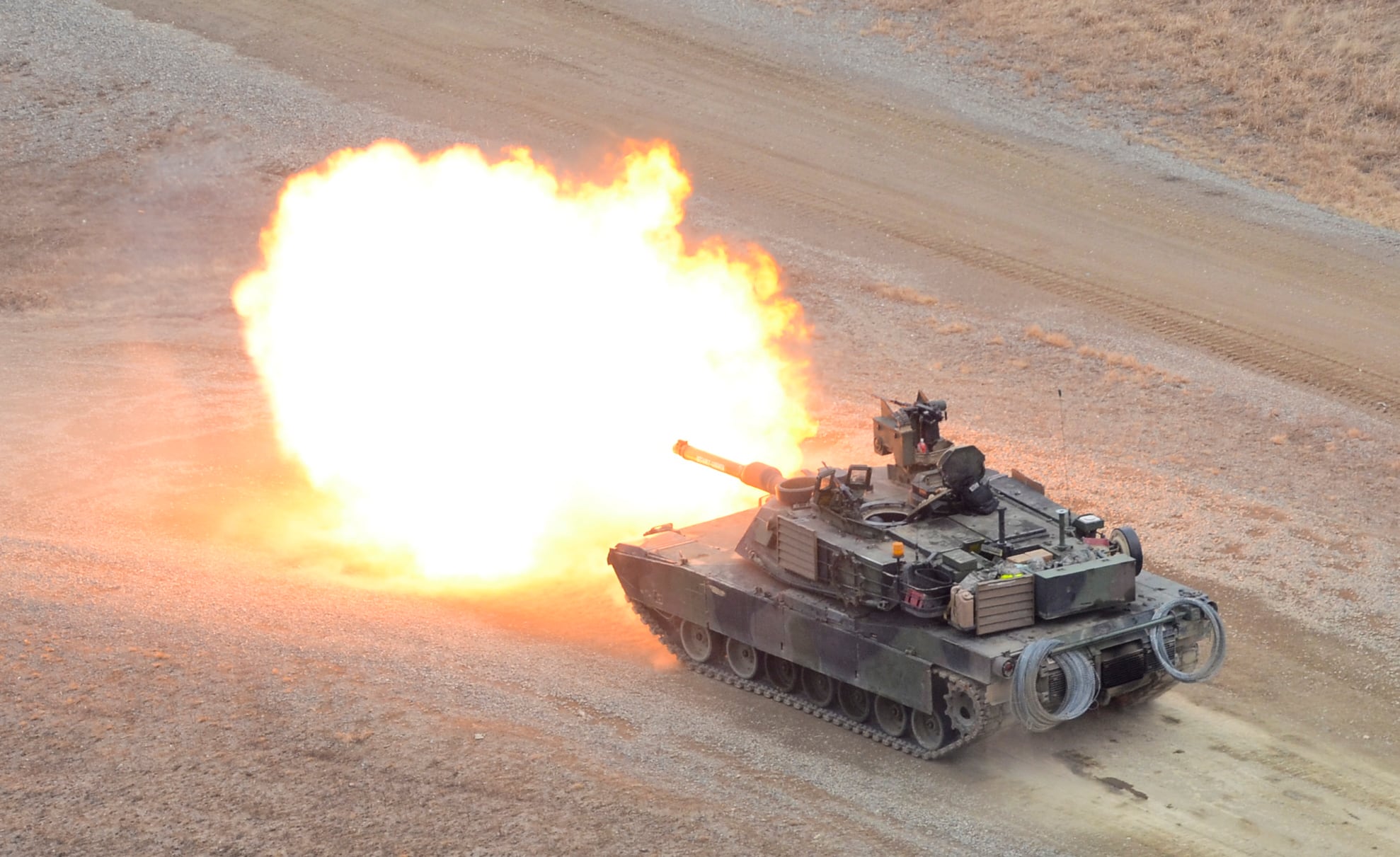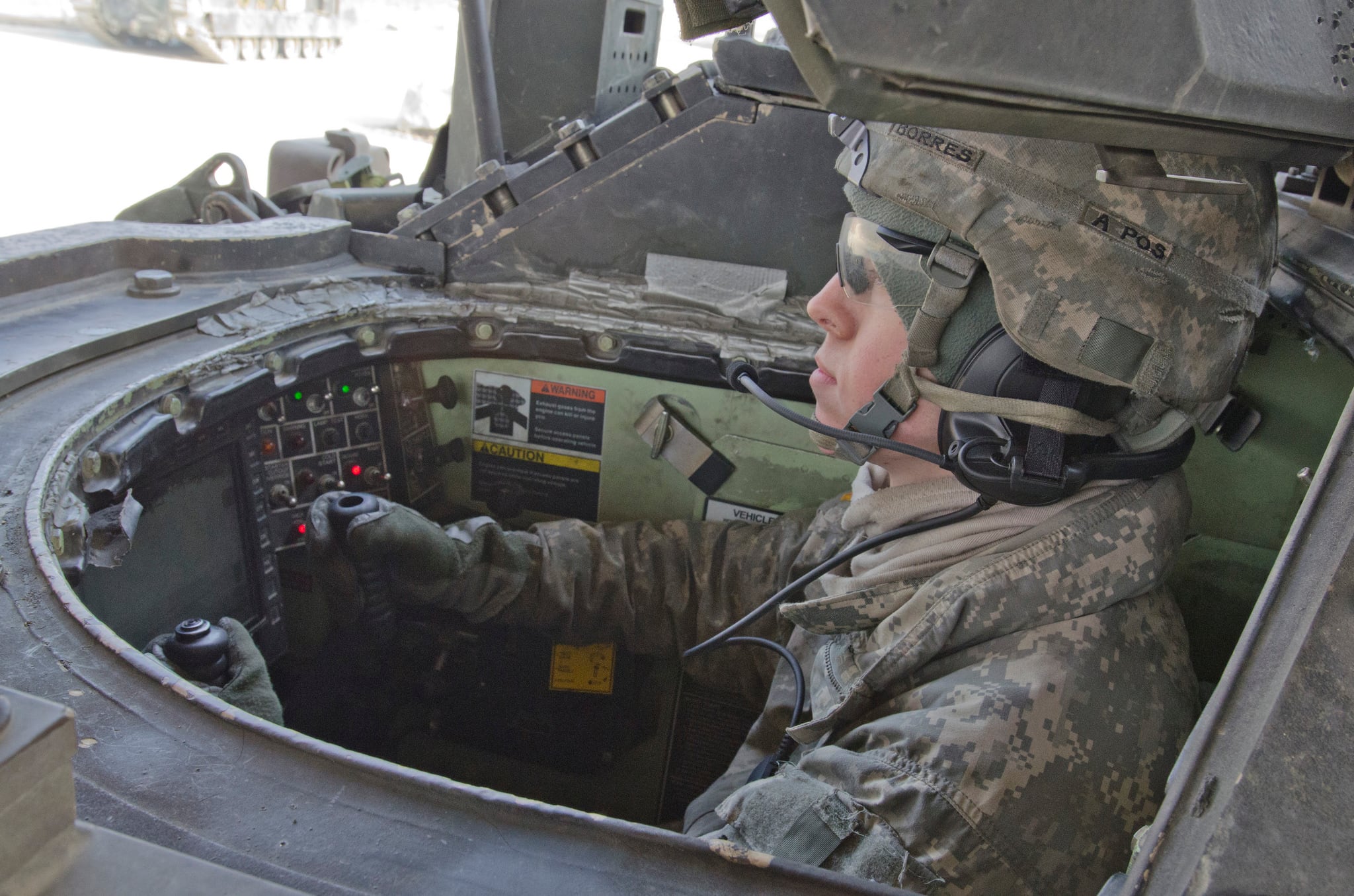As he relinquishes command of the 2nd Infantry Division, Maj. Gen. Thomas Vandal leaves behind a division in the midst of a massive transformation.
Vandal spoke with Army Times via phone, outlining what soldiers can expect in the months to come.
During an interview April 16 with Army Times, Vandal, who relinquishes command on Friday to Maj. Gen. Ted Martin, outlined what soldiers can expect in the coming months.
More — and larger — rotational units
This summer, the Army will begin rotating whole brigade combat teams into South Korea for nine-month tours. It also will inactivate the 2nd Infantry Division's 1st BCT, which has been stationed in Korea for almost 50 years.
The Army has been rotating units into Korea for some time now, but only this summer will it start rotating its primary fighting formation. The initial BCT on tap to deploy is 2nd BCT, 1st Cavalry Division, of Fort Hood, Texas.
About 4,600 soldiers from the brigade will deploy in June.

An M1A2 Abrams tank from Company D, 2nd Battalion, 9th Infantry (Mechanized), 1st Armored Brigade Combat Team, 2nd Infantry Division, fires its main gun at a target March 3 at Rodriguez Live Fire Complex. This was the last major exercise before unit's scheduled deactivation.
Photo Credit: Pfc. SeoWon Lee/Army
"This will enhance us in the future should we have to deploy forces back to the [peninsula]," he said." Should we go to conflict with North Korea, we've already validated that process and procedure."
To test this new plan, the Army began rotating battalion-sized units to Korea as early as fall 2013.
The first rotational unit to go was 4th Squadron, 6th Cavalry Regiment, a Kiowa squadron from Joint Base Lewis-McChord, Washington.
In early 2014, the Army sent 1st Battalion, 12th Cavalry Regiment, a combined-arms battalion with tanks and Bradleys from Fort Hood, to Korea as well. The unit later was replaced by about 800 soldiers from 3rd Battalion, 8th Cavalry Regiment, also from Fort Hood.
In another first, the Army announced in March that it was going to deploy a multiple launch rocket system battalion to Korea. The deployment is part of an Army-wide reorganization that increases the number of MLRS battalions in all field artillery brigades from two to three.
About 400 soldiers from 2nd Battalion, 20th Field Artillery Regiment will deploy in June. The soldiers will do a nine-month rotation, then leave behind their equipment for their successors.
With all of the rotational units, the Army in Korea will have "increased the combat capability by a total of six battalions from where we started in 2013," Vandal said.

Soldiers from 1st Battalion, 72nd Armor Regiment, 1st Armored Brigade Combat Team, 2nd Infantry Division, qualify on their assigned Bradley Fighting Vehicles during Gunnery Table VI.
Photo Credit: Sgt. Samuel Northrup/Army
"The transformation of the division has clearly enhanced our readiness," Vandal said. "Our struggle here with individual rotations is 8 to 12 percent of the division rotates every month."
The rotational units have "enhanced our ability to fight tonight," he said.
A combined division
In January, the Army began adding 31 officers, including a brigadier general, from the Republic of Korea Army into the 2nd Infantry Division headquarters. The unprecedented restructuring allows both nation's armies to better plan, train and fight together.
The Korean brigadier general is one of the division's three deputy commanding generals, and each staff has at least one Korean field-grade officer assigned to it, Vandal said.
These officers are in addition to the approximately 1,200 soldiers assigned to American units as part of the Korean Augmentation to the United States Army, or KATUSA, program.
That program, which has been in place since the 1950s, puts Korean troops at all levels of the Army's units, from tank crews to infantry squads to companies and unit staffs, Vandal said. The program is competitive, with about 12,000 Korean soldiers competing for the 1,200 slots, he said. KATUSAs serve 20-month rotations, he said.
The combined division's first test was an exercise in March called Key Resolve, Vandal said.
"It allowed us to go through to look at ourselves and see if we have the right structure and gain insights into what increased capabilities that provides us," he said.
In May, the division will formalize a "training association" with the ROK army's 16th Brigade as it prepares for Ulchi Focus Guardian, a major exercise that typically takes place in August, Vandal said.
The training association will allow the ROK brigade to work more closely with the Americans, and if the nations have to go to war against North Korea, the 16th Brigade will fall under the operational control of the 2nd Infantry Division.
As the two armies continue to refine and train, plans likely will call for more ROK officers and NCOs to be integrated into the U.S. division.
New headquarters
In fiscal 2016, the division headquarters will move about 40 miles to Camp Humphreys in Pyeongtak, south of the capital of Seoul, from its current home at Camp Red Cloud in Uijeonbu.
The move, which is part of the Land Partnership Plan between the two countries, will take place once the division's new facilities are completed. The expansion and construction project costs about $10 billion, with about 90 percent of it being paid for by the Republic of Korea. There will be new motor pools, barracks, headquarters, housing, medical and educational facilities for about 24,000 troops.
"To see Camp Humphreys is amazing," Vandal said. "It's like constructing a city. It was already an installation, but we've tripled it in size."
Vandal said he expects the division headquarters to move in January 2017, along with the rotational brigade combat team.
Vandal, who is moving on to be the assistant chief of staff, C-3/J-3 (operations) at U.S. Forces Korea, said he's proud of the soldiers in his division and all they've accomplished.
"The vast majority of them are separated from their families, and for those at Camp Casey, they're only 13 miles away from the DMZ," Vandal said. "But they train hard and they're ready to fight tonight. Without a doubt, there's a significant threat that's literally 13 miles from where they are."
Michelle Tan is the editor of Army Times and Air Force Times. She has covered the military for Military Times since 2005, and has embedded with U.S. troops in Iraq, Afghanistan, Kuwait, Haiti, Gabon and the Horn of Africa.




